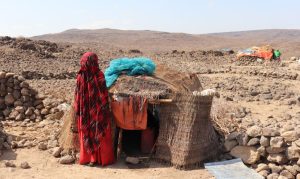War, drought driving displacement in Ethiopia
More than three million people are now internally displaced in Ethiopia, according to a new UN report.
 The latest National Displacement Report by the International Organization for Migration’s (IOM) Displacement Tracking Matrix (DTM) show that most – 69 per cent – were displaced as a direct result of conflict.
The latest National Displacement Report by the International Organization for Migration’s (IOM) Displacement Tracking Matrix (DTM) show that most – 69 per cent – were displaced as a direct result of conflict.
Drought and other climate induced events such as floods, landslides and fires have contributed to 17 per cent, and 9 per cent respectively of the displacement toll.
IOM spokesperson Abibatou Wane said the numbers amounted to a humanitarian crisis.
“These findings will help IOM and its partners, including UN agencies, NGOs, government officials, embassies, and donors, to make data-driven interventions and solutions for displaced persons in Ethiopia,” Ms Wane said.
“IOM will continue to expand its assessment coverage across the country so that the needs of more IDPs can be assessed,” she said.
The Tigray region in the north hosts the highest number of internally displaced people, primarily due to conflict, whereas the Somali region in the east hosts the highest number of people displaced by drought, the report said.
Ethiopia and other countries in the region have been impacted by the worst drought in four decades.
As part of the National Displacement Report, a Village Assessment Survey (VAS) was also carried out to track IDPs who were returning from villages they moved to and went back to their places of origin within the country.
The report further shows that an estimated 2.54 million returning IDPs were identified in over 2,500 villages across ten regions representing an increase of over 18,500 IDPs returning home since the last data was collected between August and September 2023.
Most returnees were going back to Tigray (38 per cent), Amhara (37 per cent), and Afar (9 per cent) regions. The figures show.
Meanwhile, the prolonged drought in the Horn of Africa which has come hard on the heels of a brutal civil war has brought life-threatening food shortages to Ethiopia.
The UN Refugee Agency UNHCR has said five failed rainy seasons since 2019 across the region have created a devastating drought that has affected millions of people, including refugees, in the region.
More than 150,000 Somali refugees have arrived in Ethiopia since last year. Most are women, children, older people and people with specific needs, who arrive with nothing.
Among them are a high number of unaccompanied and separated children, which heightens protection concerns.
UNHCR said water sources have dried up, crops and livestock have been decimated, and people’s capacities to support themselves have been eroded.












